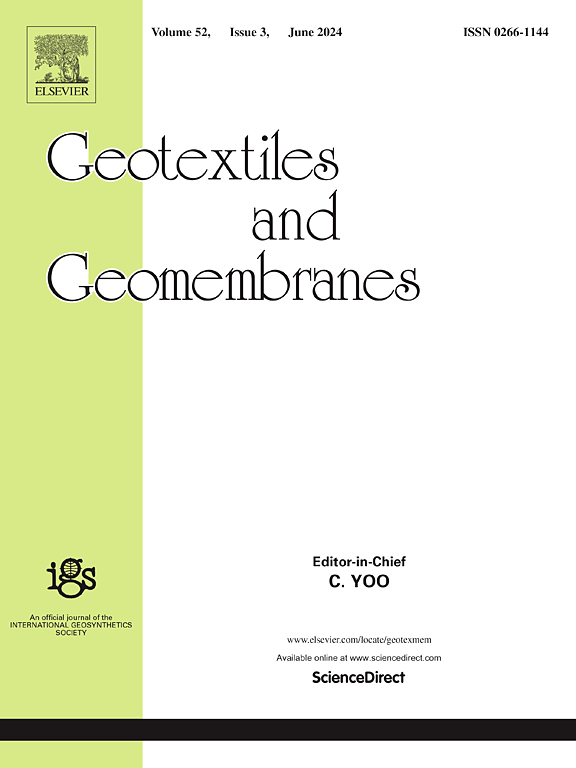Methods for mitigating effect of apparent clogging in vacuum consolidation and analysis technics – a review
IF 6.2
1区 工程技术
Q1 ENGINEERING, GEOLOGICAL
引用次数: 0
Abstract
To increase the efficiency and design accuracy of vacuum consolidation of clayey slurries with prefabricated vertical drains (PVDs) or prefabricated horizontal drains (PHDs), methods for mitigating apparent clogging around PVDs/PHDs, and consolidation solutions considering the effect of the apparent clogging are reviewed/analyzed. Methods for mitigating the effect of apparent clogging has been clarified as thermal, physical and chemical ones. For each method, its work mechanism is explained and its effectiveness is evaluated qualitatively/quantitatively. Recently published solutions for a PVD/PHD unit cell consolidation considering mechanical and/or geometrical non-linearities are summarized. Except technics adopted for modelling the non-linearities, other options considered in the solutions are: (i) Darcian or non-Darcian flow; (ii) equal strain or free strain; (iii) considering creep or not; and (iv) time dependent load or constant load. Further, an incremental imaginary time method has been described in certain detail for solving non-linear PVD/PHD unit cell consolidation with time dependent loads. It has been demonstrated that the method is a pragmatic and versatile one.
缓解真空固结中明显堵塞影响的方法及分析技术综述
为了提高预制垂直排水管和预制水平排水管对粘土浆料的真空固结效率和设计精度,本文综述和分析了缓解预制垂直排水管和预制水平排水管周围表观堵塞的方法,以及考虑表观堵塞影响的固结方案。减轻明显堵塞影响的方法已澄清为热、物理和化学方法。对于每种方法,都解释了其工作机制,并对其有效性进行了定性/定量评价。总结了最近发表的考虑力学和/或几何非线性的PVD/PHD单元胞固结解决方案。除了非线性建模所采用的技术外,解决方案中考虑的其他选项有:(i)达西或非达西流动;(ii)等应变或自由应变;(iii)是否考虑蠕变;(四)随时间变化的负荷或恒定负荷。此外,还详细描述了一种增量虚时间方法,用于求解具有时间相关载荷的非线性PVD/PHD单元胞固结。实践证明,该方法实用、通用性强。
本文章由计算机程序翻译,如有差异,请以英文原文为准。
求助全文
约1分钟内获得全文
求助全文
来源期刊

Geotextiles and Geomembranes
地学-地球科学综合
CiteScore
9.50
自引率
21.20%
发文量
111
审稿时长
59 days
期刊介绍:
The range of products and their applications has expanded rapidly over the last decade with geotextiles and geomembranes being specified world wide. This rapid growth is paralleled by a virtual explosion of technology. Current reference books and even manufacturers' sponsored publications tend to date very quickly and the need for a vehicle to bring together and discuss the growing body of technology now available has become evident.
Geotextiles and Geomembranes fills this need and provides a forum for the dissemination of information amongst research workers, designers, users and manufacturers. By providing a growing fund of information the journal increases general awareness, prompts further research and assists in the establishment of international codes and regulations.
 求助内容:
求助内容: 应助结果提醒方式:
应助结果提醒方式:


